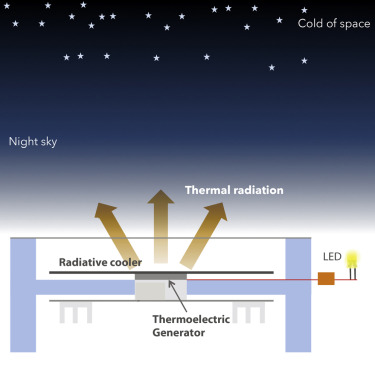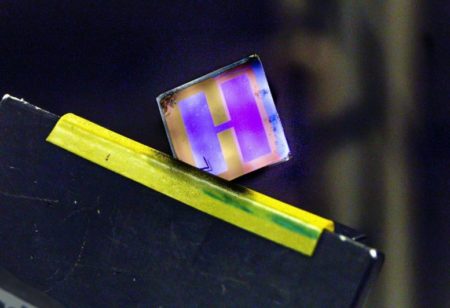September 16, 2019 – Stanford, University of California, the Chinese Academy of Sciences, and Linköping University have published some interesting new ways to generate renewable energy in the last week.
Thermoelectric energy from cold night air
The Stanford and University of California inventors of a thermoelectric device that generates electricity from cold with no heat or light input may be onto something big.
Lead researcher of the paper, Aaswath Raman, Assistant Professor of Material Sciences and Engineering at UCal-Los Angeles, describes this invention stating, “Remarkably, the device is able to generate electricity at night, when solar cells don’t work…Beyond lighting, we believe this could be a broadly enabling approach to power generation suitable for remote locations, and anywhere where power generation at night is needed.”
This is the first device to use radiative cooling to generate electricity, harnessing the energy that can be gained from differences as nighttime temperatures fall and the air cools.
The device built out of a polystyrene enclosure that has been covered by aluminized mylar and an infrared-transparent wind cover draws heat from the nighttime air and releases it through a black emitter which when connected to a voltage converter powers an LED light (see diagram below), generating 25 milliwatts of energy per square meter. All items used to build the device are off-the-shelf and cost less than $30 USD.
Although the energy yield in the current iteration is small, the researchers believe they can make it twenty times more powerful through material and design improvements, and by operating the device in hotter and drier surroundings. They describe the invention as a complementary technology to solar, filling an energy power generation gap when the sun is not shining.
Immediate practical applications include powering small remote sensors continuously without the need of battery storage. Scaling up similarly to the way photovoltaics are implemented in solar panels should make radiative cooling an attractive additional energy source for powering electronic devices in the cool of night or in outer space.

New Photovoltaic Organic Solar Cell Can Work Indoors
Making solar cells more flexible so that they can harvest energy from mulitple wavelengths of light would make them far better energy converters than the panels and technology being used today. That’s why a group of Chinese and Swedish scientists have been working on a solar cell that can optimize ambient indoor lighting converting it into electricity to power devices. Their invention is an organic solar cell that contains a mixture of materials that can optimize different light spectra found indoors. They describe their invention in a recent issue of the journal, Nature Energy.
The researchers at Linköping University are world leaders in the field of organic solar cells. Organic photovoltaics is seen as a promising alternative to conventional solar power. It requires the development of novel high-performance materials consisting of organic molecules with different chemical properties. Organic solar cells have significant promise because the material mix includes an electron-donor (p-type semiconductor) and electron-acceptor (n-type semiconductor) which creates flexibility in tuning the solar cell to harvest lots of different light spectra. The cells are cheap to manufacture and can be printed to large surfaces.
States Feng Gao, Senior Lecturer, Division of Biomolecular and Organic Electronics, at Linköping, “This work indicates great promise for organic solar caells to be widely used in our daily life for powering the Internet of Things.” Their invention delivers 1 volt of power for 1,000 hours plus in ambient light varying from 200 to 1,000 Lux maintaining an energy conversion efficiency of 23%.
Professor Jianhui Hou at the Institue of Chemistry, in Beijing, sees “large room for optimization of the materials” to yield even better energy conversion efficiencies as the two universities combine their efforts.








